Five interesting applications for the PTR-A pressure test cycling rig and why the unit is a very powerful standard solution for cycle testing for Design, Development and Production Engineers.
PTR-A Pressure cycling rig intuitive touch screen. This unit for a German customer.
What is cycle testing and why do you do it? Should you carry out a cycle test?
Cycle testing is just one type of hydraulic pressure testing that Design, Development and Production Engineers carry out. It involves raising and dropping the pressure in a test component or system a large number of times. That will highlight different modes of failure compared with simpler tests that involve pumping up to a pressure. It is just one tool to add to other basic pressure tests. Sensible Engineers will always look at the application and think whether cycling is a valuable test. Let’s recap on these basic pressure tests. Or watch our video on these basics.
Some sort of functional pressure test is a must if you have built up a hydraulic system. You really cannot escape checking that something works. It is unacceptable to have the customer find much later that the system leaks or one part does not work. What about pressure testing it at a higher pressure both to demonstrate some safety factor and to make it leak if it is going to? Your ultimate test is a burst test to destruction but that is used most often on prototypes or a sample of production components. The more difficult test is cycling, with large numbers of operations at lower pressure and to attempt to see if there is a failure. Again, this is used in development of a product or on a production line.
At one extreme, you are checking that a simple system does not fail at 2K cycles, which might be very annoying. At the other extreme, you are loading up an aircraft wing 50K times to make sure that a support has not fatigued and the wing fail. Or pressurizing a fuel tank 100K times at low pressure to ensure that it doesn’t split open, causing a nightmare dump of petrol and fire. Fatiguing of materials at lower stresses is a real engineering challenge and lots of products need to be tested for this mode of failure. In the limit, something that fails catastrophically after years of modest use is a very high risk to life. That is not good Engineering.
Why do people use our PTR-A pressure cycling rig?
Our customers wanted a simple pressure test cycling rig at a reasonable price and suitable for lots of different test programmes for their future needs. The unit is suitable for oil, water and a range of other fluids. Pressures range between very low figures like a fraction of a bar and 700 bar. A powerful USB data logging option is offered for more sophisticated Instrumentation Engineers. After over 40 years, Micropac Hydraulics have proven capabilities on testing with water and a wide range of fluids.
What is different about the PTR-A pressure cycling rig from bespoke test rigs?
Customers complained to us that any pressure cycling application seems to be treated as a special test rig application, justifying a high price. We saw a market for a catalogue programmable pressure test rig that fitted on a bench top and gave comprehensive but easy to use control over timing of the pressure cycle and the number of cycles. You can pressurize for a period, hold, dump the pressure for a time, set the number of cycles up to 40K and work to your own test pressure set on the unit. Our minimum is less than a bar and the maximum 700 bar. That basic test sequence seems to satisfy a large proportion of users. Move to wanting to control the rate of rise of pressure or the rate of drop and you are into a much more sophisticated unit. Or you require a very fast pressure /vent cycle or a complex mix of cycle times. That is technically more challenging. Our catalogue offering has been a great success for a large range of businesses and organisations needing to cycle test.
How would you use a Micropac PTR-A pressure cycling rig?
You would decide upon your test programme. What test pressure and how many test cycles? You would set your parameters like how long to pressurize for, how long to hold, how long to vent for and what dwell period before you start again? It is as simple as that. These are very easily programmed into the system. It is highly intuitive. Our PTR-A makes it easy.
Five specific applications that have been very successful for our customers.
Let’s consider a few actual applications which are relevant. Make your application our next success.
Checking out reformulated plastics on moulded bottles and vessels.
Cycle pressure testing of blow moulded bottles is important. Image courtesy of Plastik City.
You have been moulding a pressure component for years, even if it is only low pressure bottle for carbonated drinks. Suddenly, the material supplier can only offer a reformulated material that is eco-friendly. This has been happening for some years but will probably accelerate as less hydrocarbon- based materials are used. People tell us that they are offered these new materials and a list of properties but need to satisfy themselves on long term performance after a large number of cycles. Plastics have the property of “creeping” under stress over an extended period. The bonds in the material will slowly weaken and the material properties are degraded. Components can fail prematurely. Is a blow moulded bottle really a pressure component? From our day to day life, we all know that blow moulded bottles are” value engineered” to use the minimum of material and are not massively strong structures until they are full of fluid. A carbonated drink bottle is pressurized at the bottling plant to around 3.5 bar/50 psi at room temperature. In our world, that is a significant pressure for a thin sheet pressure vessel in any material. Add in thermal effects where a bottle left in the sweltering heat will rise a higher pressure due to expansion of the contents and you can see that there is a “thermal cycle” between night and day. A two litre carbonated drink bottle is said to burst at “around 10 bar/150psi” so a manufacturer would undoubtedly cycle test at a lower pressure and see at what point it failed. Our customer was packaging their own fruit juices. Reformulated materials are not a choice if the existing material is obsolete. You have to accept them and do the Engineering around making sure they still meet your requirements.
Cycle testing of composite pressure vessels.
Composite pressure vessel failure under pressure can be spectacular. Image by Ability Composites.
People who design and manufacture fibre reinforced polymer composite pressure vessels invariably need to know what the fatigue performance is on the component or at least their customer will need to know. Sarum Hydraulics always worries about safety implications of high pressure gases and unfortunately, a massive area of application for composite pressure vessels is for this application. On an aircraft or space vehicle, there is very significant risk if a vessel ruptures both in damage to other parts and also to the whole mission if there is no redundancy.
There is always an uncertainty in a composite structure. Whereas metallic components will generate very small fatigue cracks at lower loads over a large number of cycles, composites are more complicated. There will be degradation of the fibre/polymer matrix itself then some delamination of the layers of fibres and ultimately failure of the fibres themselves. As well as anticipated failure of a wound cylindrical structure under cyclical pressure, there will be complications arising from design features such as ends to vessels, bosses and mounting features, amongst others. Designing composite components is just very difficult. However, many design calculations and simulations you do, there may be no substitute for pressurizing and depressing your pressure component for a certain number of cycles. The PTR-A unit is ideal for this sort of testing. In our experience, testing on water does offer comfort on a vessel that is for gas service. Enter your parameters of pressure, duration of the pressure cycle, the hold cycle and the vent cycle then finally the number of cycles you require. It is a simple tool. We have supplied these units to a number of composite vessel manufacturers for exactly this application.
If hydrogen becomes a widely used energy source for motive power, the market for composite pressure vessels will undoubtedly grow massively. The PTR-A is your ideal tool for pressure cycle testing up to 700 bar.
Cycle testing of structures using loads applied by hydraulic cylinders.
We have talked about pressurising vessels or pressure components. The PTR unit can also be connected to hydraulic cylinders or actuators to mechanically load up a structure with specific forces, release the load and then repeat the cycle thousands of times. We can see a lot of applications for the PTR on composite mechanical structures (as opposed to simply pressurizing vessels) where physical testing is the only way to provide the ultimate assurance that a structure will not fail over a large number of cycles. Feed the PTR-A performance externally using the USB data logger output and your Instrumentation Engineer can build a sophisticated logging system.
Automotive fuel tank cycle testing
Automotive fuel tanks require cycle pressure testing. Image by courtesy of Rasandik.
Fuel tanks are very demanding components. They need to be lightweight, very durable, inexpensive and cope with very demanding fluids despite shock loadings from the fuel load or mountings. If the working fluid is petrol, there is considerable risk. All the certification regimes such as VDA, DIN, ISO and SAE for different parts of the world have requirements for the design, manufacture and testing of fuel tanks. Fuel tanks cover a massive range through aerospace, marine, stationary machinery and automotive.
A fuel tank can be proof tested to see if it deforms or leaks but an equally valuable test is cycling it on lower pressure over massive numbers of cycles to see if there is failure. From our experience, water is the test fluid rather than the fuel itself.
Cycle testing of advanced high performance Cooling systems
Cooling systems are big business. Electronics has provided a big chunk of the growth in systems that need to remove heat from compact but power-hungry electronics. When simple heat sinks and air cooling aren’t adequate, move to pressurized fluid systems with pumps and heat exchangers. Filling and charging pumps for these fluid cooling systems is one part of our business, but the PTR unit has been used for cycle testing of more extreme cooling systems on rocket motors. Here you are using a sophisticated thermal transfer fluid. Talk to us on fluid compatibilities and system requirements for your PTR-A application.
We might be able to use a standard PTR, but a Data Logging facility is a must. What can you offer?
The PTR-A can provided some of the inputs for your datalogging software. This is Hydrotechnik. Image copyright is acknowledged.
Most of our PTR-A units are sold with the optional data logging facility. That seems to reflect what people need. Talk to us.
We don’t want to pay a massive bill for a bespoke rig but do need some enhancements on the capabilities of the standard controller. Can you modify the program for us?
The catalogue PTR-A unit uses our stock controller and our own controller program written to meet our needs. We have developed this over the years with enhancements for the product in general. We can’t offer an in-house facility for odd changes to meet a specific requirement but might be able to offer a third party who can support this. Or your own instrumentation people may opt to write their own controller programme for our unit. The programming is intuitive.
Make your specific application our next user. Before looking at specialist bespoke test rigs, talk to us on your pressure cycle testing or even mechanical loading application.

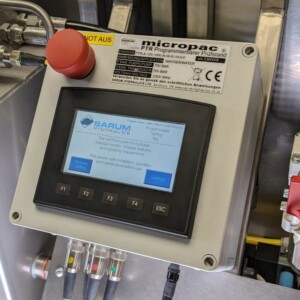
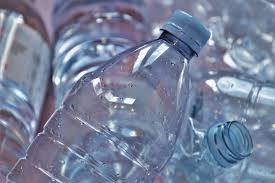
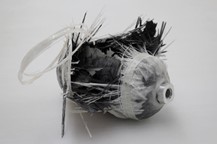
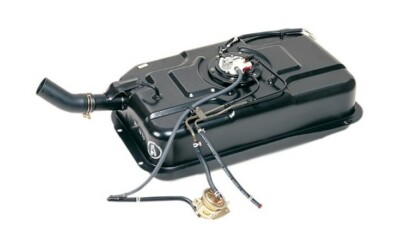
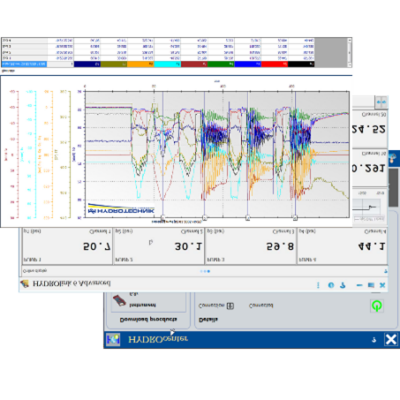
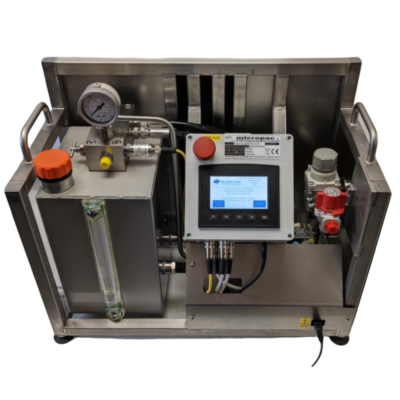

Leave A Comment